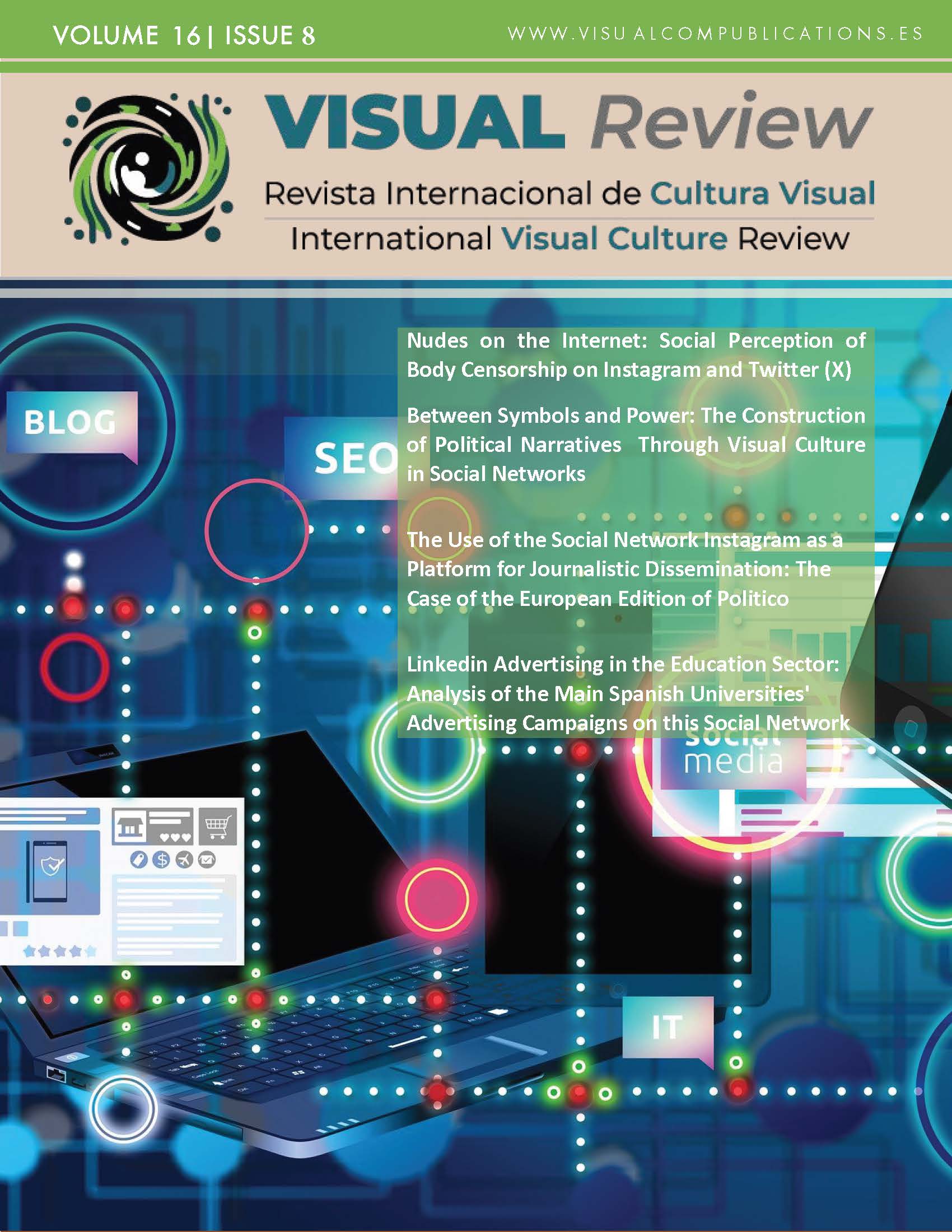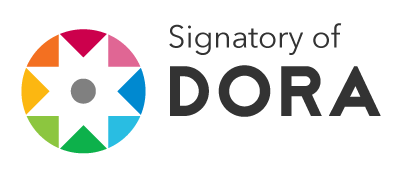Advertising Effectiveness on Facebook
An Eye-Tracking Study Applied to Wine Tourism
DOI:
https://doi.org/10.62161/revvisual.v16.5413Keywords:
Advertising effectiveness, Eye-tracking, Wine-tourism, Facebook, Visual attention, Ad recall, EngagementAbstract
This study employs eye-tracking techniques to analyze the impact of various wine tourism advertisements on consumers. We utilized the social network Facebook, given the resemblance between its users and those engaging in wine tourism. We scrutinized posts commonly employed by companies to endorse wine tourism, contrasting images of landscapes, individuals, and wineries. Participants' interaction with the platform was factored in to scrutinize the attention and recall elicited by each advertisement. Findings unveil that images featuring individuals are more attention-grabbing for promoting wine tourism. Furthermore, the correlation between engagement and users' attention and recall was established.
Downloads
Global Statistics ℹ️
|
611
Views
|
604
Downloads
|
|
1215
Total
|
|
References
Aaker, D. A., Stayman, D. M., & Vezina, R. (1988). Identifying feelings elicited by advertising. Psychology & Marketing, 5(1), 1-16. https://doi.org/10.1002/mar.4220050102 DOI: https://doi.org/10.1002/mar.4220050102
Ambler, T., & Burne, T. (1999). The impact of affect on memory of advertising. Journal of advertising research, 39, 25-34.
Bakalash, T., & Riemer, H. (2013). Exploring ad-elicited emotional arousal and memory for the ad using fMRI. Journal of Advertising, 42(4), 275-291. https://doi.org/10.1080/00913367.2013.768065 DOI: https://doi.org/10.1080/00913367.2013.768065
Beerli, A., & Santana, J. D. M. (1999). Design and validation of an instrument for measuring advertising effectiveness in the printed media. Journal of Current Issues & Research in Advertising, 21(2), 11-30. https://doi.org/10.1080/10641734.1999.10505092 DOI: https://doi.org/10.1080/10641734.1999.10505092
Bradley, M. M., Codispoti, M., Cuthbert, B. N., & Lang, P. J. (2001). Emotion and Motivation I: Defensive and Appetitive Reactions in Picture Processing, 1(3), 276–298. https://doi.org/10.1037/1528-3542.1.3.276 DOI: https://doi.org/10.1037//1528-3542.1.3.276-298
Braidot, N. (2005). Neuromarketing, neuroeconomía y negocios. Puerto Norte-Sur, 11(3), 741.
Brand, J., Diamond, S. G., Thomas, N., & Gilbert-Diamond, D. (2021). Evaluating the data quality of the Gazepoint GP3 low-cost eye tracker when used independently by study participants. Behavior Research Methods, 53, 1502-1514. https://doi.org/10.3758/s13428-020-01504-2 DOI: https://doi.org/10.3758/s13428-020-01504-2
Cents-Boonstra, M., Lichtwarck-Aschoff, A., Denessen, E., Aelterman, N., & Haerens, L. (2021). Fostering student engagement with motivating teaching: an observation study of teacher and student behaviours. Research Papers in Education, 36(6), 754-779. https://doi.org/10.1080/02671522.2020.1767184 DOI: https://doi.org/10.1080/02671522.2020.1767184
Chartrand, T. L., & Bargh, J. A. (1999). The chameleon effect: The perception–behavior link and social interaction. Journal of personality and social psychology, 76(6), 893. https://doi.org/10.1037/0022-3514.76.6.893 DOI: https://doi.org/10.1037//0022-3514.76.6.893
Cruces-Montes, S. J., Merchán-Clavellino, A., Romero-Moreno, A., & Paramio, A. (2020). Perception of the attributes of sherry wine and its consumption in young people in the South of Spain. Foods, 9(4), 417. https://doi.org/10.3390/foods9040417 DOI: https://doi.org/10.3390/foods9040417
Dessart, L. (2017). Social media engagement: a model of antecedents and relational outcomes. Journal of Marketing Management, 33(5-6), 375-399. https://doi.org/10.1080/0267257X.2017.1302975 DOI: https://doi.org/10.1080/0267257X.2017.1302975
Eijlers, E., Boksem, M. A., & Smidts, A. (2020). Measuring neural arousal for advertisements and its relationship with advertising success. Frontiers in neuroscience, 14, 736. https://doi.org/10.3389/fnins.2020.00736 DOI: https://doi.org/10.3389/fnins.2020.00736
Ellison, N. B., Steinfield, C., & Lampe, C. (2007). The benefits of Facebook “friends:” Social capital and college students’ use of online social network sites. Journal of computer‐mediated communication, 12(4), 1143-1168. https://doi.org/10.1111/j.1083-6101.2007.00367.x DOI: https://doi.org/10.1111/j.1083-6101.2007.00367.x
Gómez Carmona, D. (2020). Aplicación de la neurociencia al análisis de la efectividad de la comunicación de energías renovables. Doctoral dissertation. Granada University.
Gómez-Carmona, D., Marín-Dueñas, P. P., Tenorio, R. C., Domínguez, C. S., Muñoz-Leiva, F., & Liébana-Cabanillas, F. J. (2022). Environmental concern as a moderator of information processing: A fMRI study. Journal of Cleaner Production, 369, 133306. https://doi.org/10.1016/j.jclepro.2022.133306 DOI: https://doi.org/10.1016/j.jclepro.2022.133306
Gómez-Carmona, D., Muñoz-Leiva, F., Liébana-Cabanillas, F., Nieto-Ruiz, A., Martínez-Fiestas, M., & Campoy, C. (2021). The effect of consumer concern for the environment, self-regulatory focus and message framing on green advertising effectiveness: An eye tracking study. Environmental Communication, 15(6), 813-841. https://doi.org/10.1080/17524032.2021.1914701 DOI: https://doi.org/10.1080/17524032.2021.1914701
Gómez-Carmona, D., Paramio, A., Cruces-Montes, S., Marín-Dueñas, P. P., Montero, A. A., & Romero-Moreno, A. (2023). The effect of the wine tourism experience. Journal of Destination Marketing & Management, 29, 100793. https://doi.org/10.1016/j.jdmm.2023.100793 DOI: https://doi.org/10.1016/j.jdmm.2023.100793
Gwizdka, J., & Zhang, Y. (2015, August). Differences in eye-tracking measures between visits and revisits to relevant and irrelevant web pages. In Proceedings of the 38th International ACM SIGIR Conference on Research and Development in Information Retrieval (pp. 811-814). https://doi.org/10.1145/2766462.2767795 DOI: https://doi.org/10.1145/2766462.2767795
Hartmann, P., & Apaolaza-Ibáñez, V. (2008). Virtual Nature Experiences as Emotional Benefits in Green Product Consumption. Environment and Behavior, 40(6), 818–842. https://doi.org/10.1177/0013916507309870 DOI: https://doi.org/10.1177/0013916507309870
Hartmann, P., Apaolaza, V., & Alija, P. (2013). Nature imagery in advertising Attention restoration and memory effects. International Journal of Advertising, 183(2), 183–210. https://doi.org/10.2501/IJA-32-2-183-210 DOI: https://doi.org/10.2501/IJA-32-2-183-210
Hollebeek, L. (2011). Exploring customer brand engagement: definition and themes. Journal of strategic Marketing, 19(7), 555-573. https://doi.org/10.1080/0965254X.2011.599493 DOI: https://doi.org/10.1080/0965254X.2011.599493
Hollebeek, L. D., Glynn, M. S., & Brodie, R. J. (2014). Consumer brand engagement in social media: Conceptualization, scale development and validation. Journal of interactive marketing, 28(2), 149-165. https://doi.org/10.1016/j.intmar.2013.12.002 DOI: https://doi.org/10.1016/j.intmar.2013.12.002
Hollebeek, L., & Rather, R. A. (2019). Service innovativeness and tourism customer outcomes. International Journal of Contemporary Hospitality Management, 31(11), 4227-4246. http://DOI : 10.1108/IJCHM-03-2018-0256 DOI: https://doi.org/10.1108/IJCHM-03-2018-0256
Huang, J. T., & Narayanan, S. (2020). Effects of Attention and Recognition on Engagement, Content Creation and Sharing: Experimental Evidence from an Image Sharing Social Network. http://dx.doi.org/10.2139/ssrn.3760804 DOI: https://doi.org/10.2139/ssrn.3760804
Jacob, R. J., & Karn, K. S. (2003). Eye tracking in human-computer interaction and usability research: Ready to deliver the promises. In The mind's eye (pp. 573-605). North-Holland. https://doi.org/10.1016/B978-044451020-4/50031-1 DOI: https://doi.org/10.1016/B978-044451020-4/50031-1
Just, M. A., & Carpenter, P. A. (1978). Inference processes during reading: Reflections from eye fixations. Eye movements and the higher psychological functions, 157-174.
Kaplan, R., Kaplan, S., & Brown, T. (1989). Environmental preference: A comparison of four domains of predictors. Environment and behavior, 21(5), 509-530. https://doi.org/10.1177/0013916589215001 DOI: https://doi.org/10.1177/0013916589215001
Koch, C., & Ullman, S. (1987). Shifts in selective visual attention: towards the underlying neural circuitry. In Matters of intelligence: Conceptual structures in cognitive neuroscience (pp. 115-141). Dordrecht: Springer Netherlands. PMID: 3836989 DOI: https://doi.org/10.1007/978-94-009-3833-5_5
Kumar, V., & Nanda, P. (2019). Social media in higher education: A framework for continuous engagement. International Journal of Information and Communication Technology Education (IJICTE), 15(1), 97-108. https://DOI: 10.4018/IJICTE.2019010107 DOI: https://doi.org/10.4018/IJICTE.2019010107
Lang, P. J. (1995). The emotion probe: Studies of motivation and attention. American psychologist, 50(5), 372. https://doi.org/10.1037/0003-066X.50.5.372 DOI: https://doi.org/10.1037//0003-066X.50.5.372
Li, K., Huang, G., & Bente, G. (2016). The impacts of banner format and animation speed on banner effectiveness: Evidence from eye movements. Computers in Human Behavior, 54, 522-530. https://doi.org/10.1016/j.chb.2015.08.056 DOI: https://doi.org/10.1016/j.chb.2015.08.056
Lindström, M. (2010). Buyology: Truth and lies about why we buy. Doubleday. New York.
López Guzman, T., Rodríguez García, J., & Vieira Rodríguez, Á. (2012). Análisis diferenciado del perfil y de la motivación del turista nacional y extranjero en la ruta del vino del Marco de Jerez.
MacInnis, D. J., & Park, C. W. (1991). The differential role of characteristics of music on high-and low-involvement consumers' processing of ads. Journal of consumer Research, 18(2), 161-173. https://doi.org/10.1086/209249 DOI: https://doi.org/10.1086/209249
Manchanda, P., Dubé, J. P., Goh, K. Y., & Chintagunta, P. K. (2006). The effect of banner advertising on internet purchasing. Journal of Marketing Research, 43(1), 98-108. https://doi.org/10.1509/jmkr.43.1.98 DOI: https://doi.org/10.1509/jmkr.43.1.98
Martínez-Fiestas, M., Del Jesus, M. I. V., Sánchez-Fernández, J., & Montoro-Rios, F. J. (2015). A psychophysiological approach for measuring response to messaging: How consumers emotionally process green advertising. Journal of Advertising Research, 55(2), 192-205. https://DOI: 10.2501/JAR-55-2-192-205 DOI: https://doi.org/10.2501/JAR-55-2-192-205
Matthes, J., & Beyer, A. (2017). Toward a Cognitive-Affective Process Model of Hostile Media Perceptions: A Multi-Country Structural Equation Modeling Approach. Communication Research, 44(8), 1075–1098. https://doi.org/10.1177/0093650215594234 DOI: https://doi.org/10.1177/0093650215594234
Myers, S. D., Deitz, G. D., Huhmann, B. A., Jha, S., & Tatara, J. H. (2020). An eye-tracking study of attention to brand-identifying content and recall of taboo advertising. Journal of Business Research, 111, 176-186. https://doi.org/10.1016/j.jbusres.2019.08.009 DOI: https://doi.org/10.1016/j.jbusres.2019.08.009
Micu, A. C., & Plummer, J. T. (2010). Measurable emotions: How television ads really work: Patterns of reactions to commercials can demonstrate advertising effectiveness. Journal of Advertising Research, 50(2), 137–153. https://DOI: 10.2501/S0021849910091300 DOI: https://doi.org/10.2501/S0021849910091300
Muñoz-Leiva, F., Hernández-Méndez, J., & Gómez-Carmona, D. (2019). Measuring advertising effectiveness in Travel 2.0 websites through eye-tracking technology. Physiology & behavior, 200, 83-95. https://doi.org/10.1016/j.physbeh.2018.03.002 DOI: https://doi.org/10.1016/j.physbeh.2018.03.002
Naidoo, V., & Hollebeek, L. D. (2016). Higher education brand alliances: Investigating consumers' dual-degree purchase intentions. Journal of Business Research, 69(8), 3113-3121. https://doi.org/10.1016/j.jbusres.2016.01.027 DOI: https://doi.org/10.1016/j.jbusres.2016.01.027
Pieters, R., & Wedel, M. (2012). Ad gist: Ad communication in a single eye fixation. Marketing Science, 31(1), 59-73. https://doi.org/10.1287/mksc.1110.0673 DOI: https://doi.org/10.1287/mksc.1110.0673
Pieters, R., Rosbergen, E., & Wedel, M. (1999). Visual Attention to Repeated Print Advertising: A Test of Scanpath Theory. Journal of Marketing Research, 36(4), 424–438. https://doi.org/10.1177/002224379903600403 DOI: https://doi.org/10.1177/002224379903600403
Plassmann, H., Yoon, C., Feinberg, F. M., & Shiv, B. (2011). Consumer neuroscience. Wiley international encyclopedia of marketing, 3. https://doi.org/10.1002/9781444316568.wiem03051 DOI: https://doi.org/10.1002/9781444316568.wiem03051
Portela, J. F., & Domínguez, M. J. V. (2020). Las rutas del vino como motores de dinamización socio-territorial: el caso de Castilla y León. Boletín de la Asociación de Geógrafos Españoles, (84). https://doi.org/10.21138/bage.2789 DOI: https://doi.org/10.21138/bage.2789
Orquin, J. L., & Holmqvist, K. (2018). Threats to the validity of eye-movement research in psychology. Behavior research methods, 50, 1645-1656. https://doi.org/10.3758/s13428-017-0998-z DOI: https://doi.org/10.3758/s13428-017-0998-z
Otamendi, F. J., & Sutil Martín, D. L. (2020). The emotional effectiveness of advertisement. Frontiers in psychology, 11, 2088. https://doi.org/10.3389/fpsyg.2020.02088 DOI: https://doi.org/10.3389/fpsyg.2020.02088
Rayner, K., & Castelhano, M. (2007). Eye movements. Scholarpedia, 2(10), 3649. DOI: https://doi.org/10.4249/scholarpedia.3649
Robertson, J., Ferreira, C., & Botha, E. (2018). The influence of product knowledge on the relative importance of extrinsic product attributes of wine. Journal of Wine Research, 29(3), 159-176. https://doi.org/10.1080/09571264.2018.1505605 DOI: https://doi.org/10.1080/09571264.2018.1505605
Rodríguez, Á. V., López-Guzmán, T., & García, J. R. (2013). Análisis del enoturista en la Denominación de Origen del Jerez-Xérès-Sherry (España). Tourism & Management Studies, 9(2), 37-43.
Rutishauser, U., Walther, D., Koch, C., & Perona, P. (2004). Is bottom-up attention useful for object recognition? Proceedings of the 2004 IEEE. Computer Society Conference on Computer Vision and Pattern Recognition, 2, 37–44. https://DOI: 10.1109/CVPR.2004.1315142 DOI: https://doi.org/10.1109/CVPR.2004.1315142
Shapiro, Stewart, Deborah J. MacInnis and C. Whan Park (2002), “Understanding
Program-Induced Mood Effects: Decoupling Arousal from Valence,” JA, 31 (4), 16-26 https://doi.org/10.1080/00913367.2002.10673682 DOI: https://doi.org/10.1080/00913367.2002.10673682
Schwarz, M., Rodríguez, M. C., Guillén, D. A., & Barroso, C. G. (2011). Analytical characterisation of a Brandy de Jerez during its ageing. European Food Research and Technology, 232, 813-819. https://doi.org/10.1007/s00217-011-1448-2 DOI: https://doi.org/10.1007/s00217-011-1448-2
Serrabassa, M. C., & Costa, N. C. (2020). Marketing como herramienta para la gestión. El caso de la Ruta del Vino de la DO Empordà (Costa Brava, españa). Communication papers, 9(19), 123-142. DOI: https://doi.org/10.33115/udg_bib/cp.v9i19.22504
Shaw, S. D., & Bagozzi, R. P. (2018). The neuropsychology of consumer behavior and marketing. Consumer Psychology Review, 1(1), 22–40. https://doi.org/10.1002/arcp.1006 DOI: https://doi.org/10.1002/arcp.1006
Simola, J., Kivikangas, M., Kuisma, J., & Krause, C. M. (2013). Attention and memory for newspaper advertisements: effects of ad–editorial congruency and location. Applied Cognitive Psychology, 27(4), 429-442. https://doi.org/10.1002/acp.2918 DOI: https://doi.org/10.1002/acp.2918
Trunfio, M., & Rossi, S. (2021). Conceptualising and measuring social media engagement: A systematic literature review. Italian Journal of Marketing, 2021, 267-292. https://doi.org/10.1007/s43039-021-00035-8 DOI: https://doi.org/10.1007/s43039-021-00035-8
Ulrich, R. S., Simons, R. F., Losito, B. D., Fiorito, E., Miles, M. A., & Zelson, M. (1991). Stress recovery during exposure to natural and urban environments. Journal of environmental psychology, 11(3), 201-230. https://doi.org/10.1016/S0272-4944(05)80184-7 DOI: https://doi.org/10.1016/S0272-4944(05)80184-7
Venkatraman, V., Dimoka, A., Pavlou, P. A., Vo, K., Hampton, W., Bollinger, B., … Winer, R. S. (2015). Predicting Advertising success beyond Traditional Measures: New Insights from Neurophysiological Methods and Market Response Modeling. Journal of Marketing Research, 52(4), 436–452. https://doi.org/10.1509/jmr.13.0593 DOI: https://doi.org/10.1509/jmr.13.0593
Wedel, M., & Pieters, R. (2008). A review of eye-tracking research in marketing. Review of marketing research, 4(2008), 123-147. http://dx.doi.org/10.1561/1700000011 DOI: https://doi.org/10.1108/S1548-6435(2008)0000004009
Wen, H., & Leung, X. Y. (2021). Virtual wine tours and wine tasting: The influence of offline and online embodiment integration on wine purchase decisions. Tourism Management, 83, 104250. https://doi.org/10.1016/j.tourman.2020.104250 DOI: https://doi.org/10.1016/j.tourman.2020.104250
Wolfe, J. M., & T. S. Horowitz. What attributes guide the deployment of visual attention and how do they do it?. Nature Reviews Neuroscience 5(6), 495-501. https://doi.org/10.1038/nrn1411 DOI: https://doi.org/10.1038/nrn1411
Zhang, X. (2020). The influences of brand awareness on consumers’ cognitive process: An event-related potentials study. Frontiers in Neuroscience, 14, 549. https://doi.org/10.3389/fnins.2020.00549 DOI: https://doi.org/10.3389/fnins.2020.00549
Zikmund, W. G., Babin, B. J., Carr, J. C., & Griffin, M. (2003). Research methods. Health economics research method, 2.
Downloads
Published
How to Cite
Issue
Section
License
Copyright (c) 2024 VISUAL REVIEW. International Visual Culture Review / Revista Internacional de Cultura Visual

This work is licensed under a Creative Commons Attribution-NoDerivatives 4.0 International License.
Those authors who publish in this journal accept the following terms:
-
Authors retain copyright.
-
Authors transfer to the journal the right of first publication. The journal also owns the publishing rights.
-
All published contents are governed by an Attribution-NoDerivatives 4.0 International License.
Access the informative version and legal text of the license. By virtue of this, third parties are allowed to use what is published as long as they mention the authorship of the work and the first publication in this journal. If you transform the material, you may not distribute the modified work. -
Authors may make other independent and additional contractual arrangements for non-exclusive distribution of the version of the article published in this journal (e.g., inclusion in an institutional repository or publication in a book) as long as they clearly indicate that the work was first published in this journal.
- Authors are allowed and recommended to publish their work on the Internet (for example on institutional and personal websites), following the publication of, and referencing the journal, as this could lead to constructive exchanges and a more extensive and quick circulation of published works (see The Effect of Open Access).













